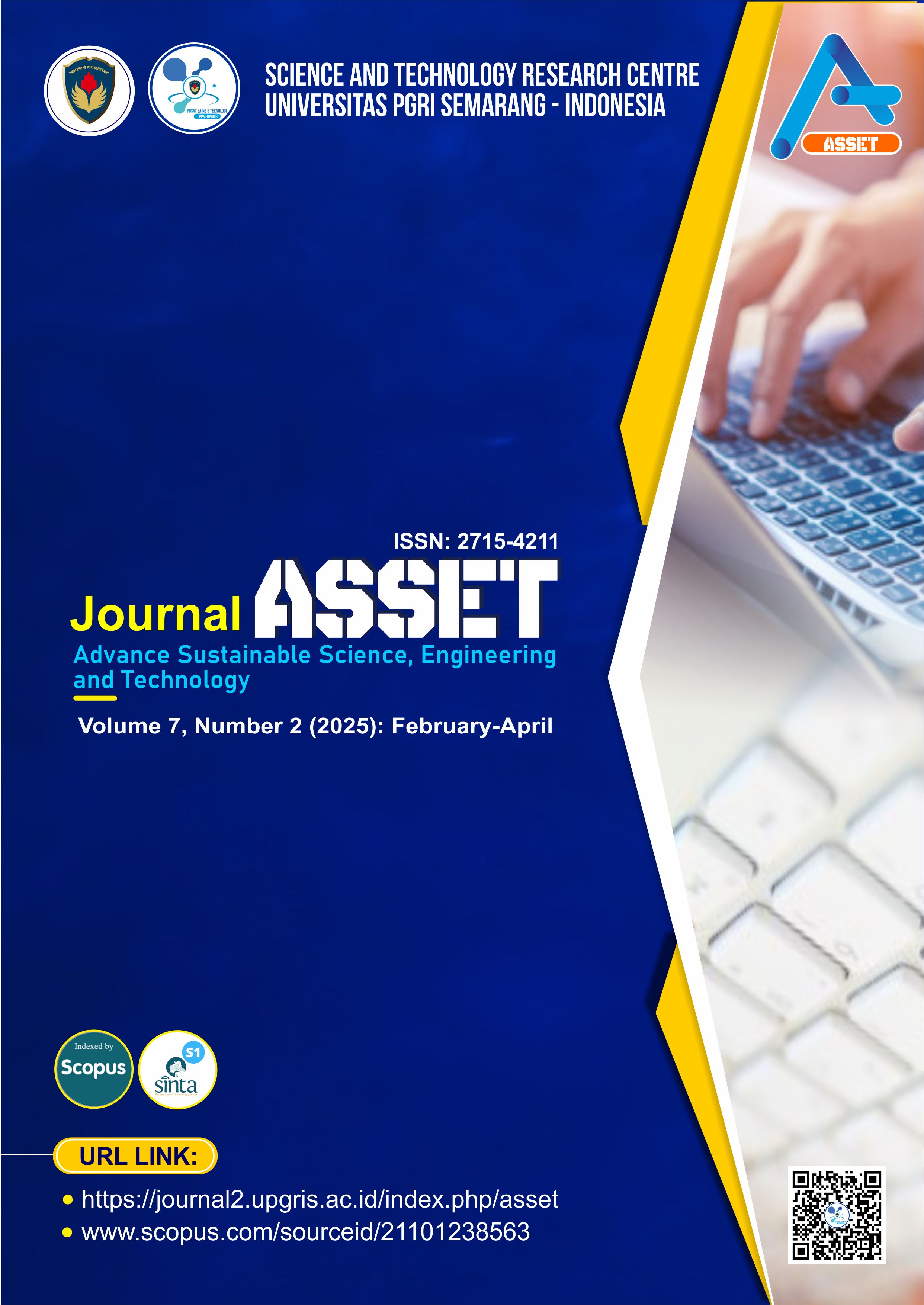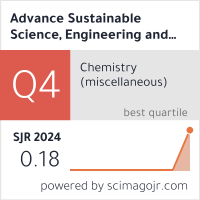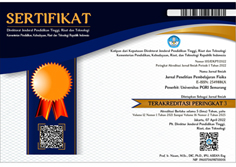Molecular Identification of Color Variants of Procambarus clarkii Using the COI Gene for Taxonomic Validation
DOI:
https://doi.org/10.26877/hcaz9264Keywords:
Procambarus clarkii, COI gene, Color variants, Taxonomic validation, Molecular identificationAbstract
This study addresses taxonomic uncertainty surrounding color variants of Procambarus clarkii in aquaculture and conservation contexts. We investigated whether commercially significant color morphs represent distinct subspecies or phenotypic variations of a single species. Using the cytochrome c oxidase subunit I (COI) gene as a molecular marker, we analyzed four color morphs (blue, white, orange, and brown) from aquaculture facilities in Banyumas Regency. DNA extraction, PCR amplification, and sequencing were performed on 20 specimens. Results showed high sequence homology (98.7-99.8%) across all variants, confirming they belong to a single species. Genetic distance analysis revealed minimal divergence (0.2-1.3%), insufficient for subspecies classification. Phylogenetic reconstruction demonstrated specimens clustered by genetic similarity rather than color or geographic origin, indicating coloration results from genetic mutations rather than environmental adaptations. This COI-based approach provides a molecular framework for taxonomic classification of P. clarkii varieties, with implications for breeding programs, variety certification, and management of this economically important yet potentially invasive species.
References
[1] McAlain; W.R. & Romaire R.P. Procambarus clarkii. In Cultured aquatic species fact sheets. 2009.
[2] Gherardi F, Aquiloni L, Diéguez-Uribeondo J, Tricarico E. Managing invasive crayfish: Is there a hope? Aquat Sci 2011;73:185–200. https://doi.org/10.1007/s00027-011-0181-z.
[3] Loureiro TG, Anastácio PMSG, Araujo PB, Souty-Grosset C, Almerão MP. Red swamp crayfish: biology, ecology and invasion - an overview. Nauplius 2015;23:1–19. https://doi.org/10.1590/s0104-64972014002214.
[4] Tricarico E, Gherardi F. Past ownership makes crayfish more aggressive. Behav Ecol Sociobiol 2010;64:575–81. https://doi.org/10.1007/s00265-009-0873-8.
[5] Chucholl C. Invaders for sale: Trade and determinants of introduction of ornamental freshwater crayfish. Biol Invasions 2013;15:125–41. https://doi.org/10.1007/s10530-012-0273-2.
[6] Papavlasopoulou I, Vardakas L, Perdikaris C, Kommatas D, Paschos I. Ornamental fish in pet stores in Greece: A threat to biodiversity? Mediterr Mar Sci 2014;15:126–34. https://doi.org/10.12681/mms.484.
[7] Papavlasopoulou I, Perdikaris C, Vardakas L, Paschos I. Enemy at the gates: Introduction potential of non-indigenous freshwater crayfish in Greece via the aquarium trade. Cent Eur J Biol 2014;9:11–8. https://doi.org/10.2478/s11535-013-0120-6.
[8] Patoka J, Petrtýl M, Kalous L. Garden ponds as potential introduction pathway of ornamental crayfish. Knowl Manag Aquat Ecosyst 2014:1–8. https://doi.org/10.1051/kmae/2014019.
[9] Huner J V, Barr JE. Red swamp crawfish: Biology and exploitation; Louisiana sea grant college program. Center for Wetland Resources, Lousiana State Univ.; 1991.
[10] Hobbs Iii HH, Jass JP, Huner J V, Iii HHH. A Review of Global Crayfish Introductions with Particular Emphasis on Two North American Species (Decapoda, Cambaridae). Source Crustac 1989;56:299–316.
[11] Larson ER, Olden JD. The State of Crayfish in the Pacific Northwest. Fisheries 2011;36:60–73. https://doi.org/10.1577/03632415.2011.10389069.
[12] Azizah RA, Bhagawati D, Sastranegara H. Budidaya Lobster Hias Air Tawar ( Procambarus clarkii ) dengan Sistem Resirkulasi 2024;5:42–51.
[13] Putra MD, Bláha M, Wardiatno Y, Krisanti M, Yonvitner, Jerikho R, et al. Procambarus clarkii (Girard, 1852) and crayfish plague as new threats for biodiversity in Indonesia. Aquat Conserv Mar Freshw Ecosyst 2018;28:1434–40. https://doi.org/10.1002/aqc.2970.
[14] Patoka J, Kalous L, Kopecký O. Imports of ornamental crayfish: The first decade from the Czech Republic’s perspective. Knowl Manag Aquat Ecosyst 2015;2015-Janua:1–9. https://doi.org/10.1051/kmae/2014040.
[15] Bláha M, Žurovcová M, Kouba A, Policar T, Kozák P. Founder event and its effect on genetic variation in translocated populations of noble crayfish (Astacus astacus). J Appl Genet 2016;57:99–106. https://doi.org/10.1007/s13353-015-0296-3.
[16] Gherardi F. Biological invaders in inland waters: Profiles, distribution, and threats. 2007. https://doi.org/10.1007/978-1-4020-6029-8.
[17] Filipova L, Grandjean F, Chucholl C, Soes DM, Petrusek A. Identification of exotic North American crayfish in Europe by DNA barcoding. Knowl Manag Aquat Ecosyst 2011:11.
[18] Torres E, Álvarez F. Genetic variation in native and introduced populations of the red swamp crayfish Procambarus clarkii (Girard, 1852) (Crustacea, Decapoda, Cambaridae) in Mexico and Costa Rica. Aquat Invasions 2012;7:235–41. https://doi.org/10.3391/ai.2012.7.2.009.
[19] Li Y, Guo X, Cao X, Deng W, Luo W, Wang W. Population genetic structure and post-establishment dispersal patterns of the red swamp crayfish Procambarus clarkii in China. PLoS One 2012;7. https://doi.org/10.1371/journal.pone.0040652.
[20] Paulson EL, Martin AP. Discerning invasion history in an ephemerally connected system: Landscape genetics of Procambarus clarkii in Ash Meadows, Nevada. Biol Invasions 2014;16:1719–34. https://doi.org/10.1007/s10530-013-0621-x.
[21] Doyle JJ, Doyle JL. A rapid DNA isolation procedure for small quantities of fresh leaf tissue. Phytochem Bull 1987.
[22] Folmer RHA, Nilges M, Folkers PJM, Konings RNH, Hilbers CW. A model of the complex between single-stranded DNA and the single-stranded DNA binding protein encoded by gene V of filamentous bacteriophage M13. J Mol Biol 1994;240:341–57.
[23] Kumar S, Stecher G, Li M, Knyaz C, Tamura K. MEGA X: molecular evolutionary genetics analysis across computing platforms. Mol Biol Evol 2018;35:1547–9.
[24] Kimura M. A simple method for estimating evolutionary rates of base substitutions through comparative studies of nucleotide sequences. J Mol Evol 1980;16:111–20. https://doi.org/10.1007/BF01731581.
[25] Excoffier L, Laval G, Schneider S. Arlequin (version 3.0): An integrated software package for population genetics data analysis. Evol Bioinforma 2005;1:117693430500100. https://doi.org/10.1177/117693430500100003.
[26] Gherardi F. Crayfish invading Europe: The case study of Procambarus clarkii. Mar Freshw Behav Physiol 2006;39:175–91. https://doi.org/10.1080/10236240600869702.
[27] Lamendin R, Miller K, Ward RD. Labelling accuracy in Tasmanian seafood: An investigation using DNA barcoding. Food Control 2015;47:436–43. https://doi.org/10.1016/j.foodcont.2014.07.039.
[28] Stein ED, White BP, Mazor RD, Miller PE, Pilgrim EM. Evaluating Ethanol-based Sample Preservation to Facilitate Use of DNA Barcoding in Routine Freshwater Biomonitoring Programs Using Benthic Macroinvertebrates. PLoS One 2013;8:1–7. https://doi.org/10.1371/journal.pone.0051273.
[29] Miller JM, Binnicker MJ, Campbell S, Carroll KC, Chapin KC, Gilligan PH, et al. A Guide to Utilization of the Microbiology Laboratory for Diagnosis of Infectious Diseases: 2018 Update by the Infectious Diseases Society of America and the American Society for Microbiology. Clin Infect Dis 2018;67:e1–94. https://doi.org/10.1093/cid/ciy381.
[30] Santos SS, Nunes I, Nielsen TK, Jacquiod S, Hansen LH, Winding A. Soil DNA Extraction Procedure Influences Protist 18S rRNA Gene Community Profiling Outcome. Protist 2017;168:283–93. https://doi.org/10.1016/j.protis.2017.03.002.
[31] Barros-Alves S de P, Alves DFR, Hirose GL. Population biology of the freshwater shrimp Atya scabra (Leach, 1816) (Crustacea: Decapoda) in São Francisco River, Brazil: evidence from a population at risk of extinction. Nauplius 2021;29:1–13. https://doi.org/10.1590/2358-2936e2021009.
[32] Lorenz TC. Polymerase Chain Reaction : Basic Protocol Plus Troubleshooting and Optimization Strategies 2012:1–14. https://doi.org/10.3791/3998.
[33] Liu J, Sun Y, Chen Q, Wang M, Li Q, Zhou W, et al. Genetic Diversity Analysis of the Red Swamp Crayfish Procambarus clarkii in Three Cultured Populations Based on Microsatellite Markers. Animals 2023;13. https://doi.org/10.3390/ani13111881.
[34] Vogt G. Phenotypic plasticity in the monoclonal marbled crayfish is associated with very low genetic diversity but pronounced epigenetic diversity. Curr Zool 2023;69:426–41. https://doi.org/10.1093/cz/zoac094.
[35] Sommer RJ. Phenotypic plasticity: From theory and genetics to current and future challenges. Genetics 2020;215:1–13. https://doi.org/10.1534/genetics.120.303163.
[36] Burggren WW, Mendez-Sanchez JF. “Bet hedging” against climate change in developing and adult animals: roles for stochastic gene expression, phenotypic plasticity, epigenetic inheritance and adaptation. Front Physiol 2023;14:1–19. https://doi.org/10.3389/fphys.2023.1245875.
[37] De Lisle SP, Mäenpää MI, Svensson EI. Phenotypic plasticity is aligned with phenological adaptation on both micro- and macroevolutionary timescales. Ecol Lett 2022;25:790–801. https://doi.org/10.1111/ele.13953.
[38] Mai R. Mechanisms of Adaptation in Aquatic Species : From Phenotypic Plasticity to Genetic Evolution 2024;14:139–53. https://doi.org/10.5376/ija.2024.14.0015.











